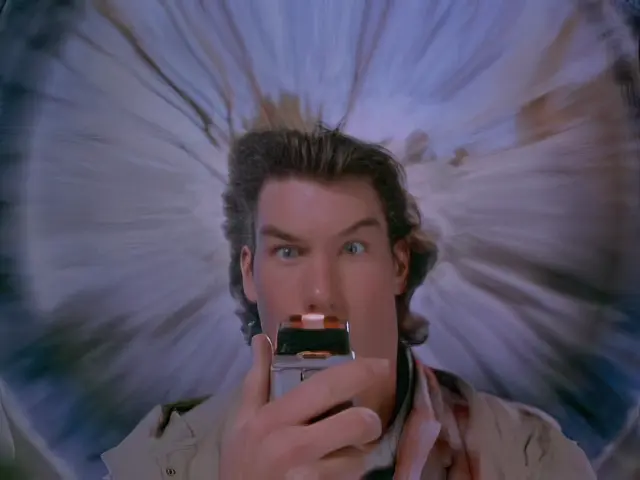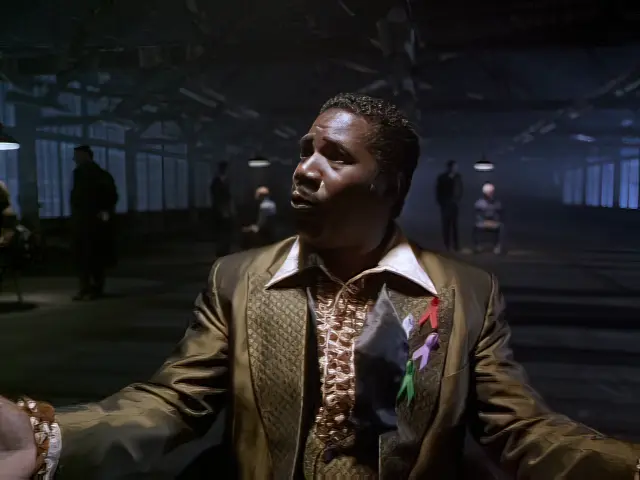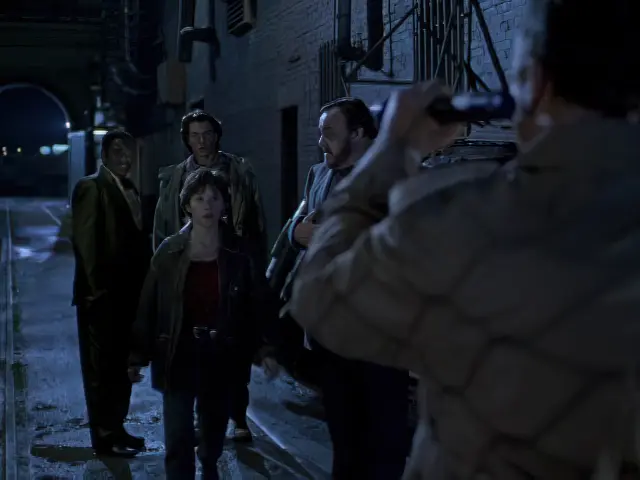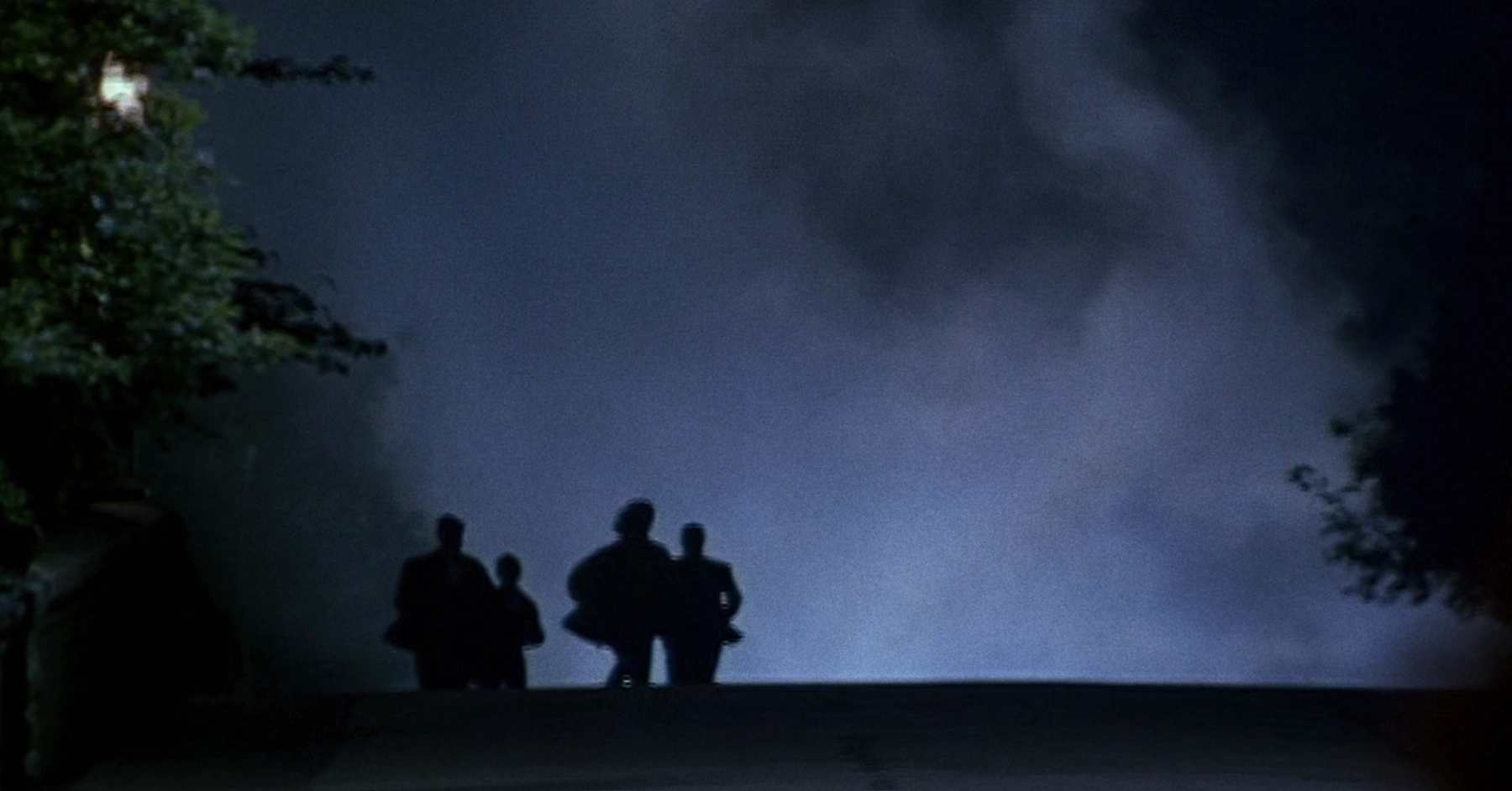Episode Review: Pilot
Season 1
Airdate: 3/22/95
Rating: 5/5
Episode Details
Airdate: March 22, 1995
Network: FOX
Director: Andy Tennant
Writers: Tracy Tormé, Robert K. Weiss
Notable Guest Stars: Linda Henning, Joseph A. Wagner, Roger R. Cross, Jason Gaffney, Tom Butler
Nielsen Ratings: Viewers: 14.1 Million, Rating: 9.5, Share: 15, Rank: 51
Worlds: Earth Prime, Elvis World, (7) Unknown Worlds (Not Seen), Quinn’s Double’s World, Chicago Cubs World, Happy World, Ice World, Communist World, Squeaking Gate World
Memorable Quotes:
Quinn (commenting about the timer): “So what do we do with this thing?”
Professor: “I never thought to hear myself say such a thing, but I believe we should consider destroying it. Einstein regretted that he had given the world the atom bomb. Oppenheimer, when he saw the first explosion, quoted the Hindu scripture, “I am become Shiva, God, the destroyer of worlds.’”
Quinn: “But think of the benefits. There are bound to be worlds that have outlawed war or cured cancer.”
Professor: “And worlds where they have perfected war and developed new cancers.”
Wade: “Maybe that’s why we should keep it a secret. If I found a place that was paradise, I don’t think I’d tell anybody.”
Quinn: “Well, I’d like to propose a toast. To wherever you live.
Rembrandt: “And whatever your struggle.”
Wade: “To the revolution.”
“Same planet. Different dimension.” – Quinn Mallory
We’re brought into the secret world of Quinn Mallory, a brilliant college student who opens the gateway to parallel worlds.
For many, the aspect of parallel worlds or different dimensions is a tough concept to understand. Even from the very beginning of the Pilot. The base origins of the theory dates back as far as the 5th century BCE. However what we know today came from the Nobel Prize winning physicist Erwin Schrödinger. He proposed a unified field theory, which can ultimately lead to other dimensions. As you’ll see in the episode, Quinn Mallory’s cat is a homage to Schrödinger. You’ll also see Quinn with the book Hyperspace by Michio Kaku, a theoretical physicist. It stands to reason the creators of Sliders, Tracy Tormé and Robert K. Weiss have undoubtedly done their homework.
 In simple terms there is thought to be hundreds, if not thousands of other earths. They are literally right where you are standing or sitting, right now. You cannot see them or interact with them without a way of decoding the math behind it. A duplicate of yourself or otherwise known as a ‘double’ may exist in these other dimensions; or maybe not. Take for example, your best friend didn’t invite you to their party. So you stay home and cook your dinner. In another dimension, your friend does invite you to their party. This leads you to drive to their home, which ultimately ends with your double being killed in a car accident. The choices we make, and our other selves in these dimensions, can alter what occurs.
In simple terms there is thought to be hundreds, if not thousands of other earths. They are literally right where you are standing or sitting, right now. You cannot see them or interact with them without a way of decoding the math behind it. A duplicate of yourself or otherwise known as a ‘double’ may exist in these other dimensions; or maybe not. Take for example, your best friend didn’t invite you to their party. So you stay home and cook your dinner. In another dimension, your friend does invite you to their party. This leads you to drive to their home, which ultimately ends with your double being killed in a car accident. The choices we make, and our other selves in these dimensions, can alter what occurs.
In the episode Quinn uses a timing device. It allows wormholes to open so he can go to these different earths. I must admit the special effects for the wormholes (vortexes) in this 1995 episode are stellar for its time. The idea of a living Elvis Presley and a red traffic light that means go, is a brilliant idea. It’s slowly setting the stage for you to understand the theory behind parallel worlds. It’s not an easy task to explain when everyone is accustom to time travel. Which this indeed is not. It frustrates me to see someone calling this a time travel show, like Quantum Leap or Back to the Future. The timing device or ‘timer’ that allows Quinn to travel is the size of a TV remote control or say the tricorder in Star Trek. The timer is in fact, molded from a Motorola cell phone.
Sliders doesn’t rely heavily on special effects but the story instead, and I like that. The narrative is based in San Francisco, California. However, the first two seasons were primarily filmed in Vancouver, Canada resulting in some beautiful scenery and city life. In this Pilot episode they wanted to lay some ground work and filmed the Fisherman’s Wharf, the Transamerica Pyramid Building and more in San Francisco.
For our character line up there’s Quinn Mallory, boy-genius, gifted student and electronics salesman, who opens the gateway. Professor Maximillian Arturo is Quinn’s distinguished Professor. He’s intelligent, bombastic at times, but is seen as the father figure of the show. Wade Welles, is a co-worker, and poetrist. She’s Quinn’s close friend and crush. Rembrandt Brown is a washed up R&B singer destined to reboot his musical career. I don’t know how creator Tracy Tormé done it, but his lineup of characters blend so well together. More so than in any other series I’ve seen. The show is science fiction with a twist of black satire.
Quinn thinks he’s going nuts. Ironically this is where the fun begins. He ends up perplexed as he is presumed to have insulted his Professor (Arturo) and lunatic electronics boss, named Hurley. He ends up seeing his double (his other self from a different dimension), and discusses his adventures of sliding. Before the other Quinn slides he gives our Quinn a warning but his voice fades before he gives the message. He lives in his mother’s basement trying to perfect his timing device and the math behind it all, yet his double solved the math for him.
There are certain comedic tweaks that mesh so well with this science fiction series. An eccentric lawyer shouts on a television “I’ll fight for you!”, after his client says an anvil fell on his head. Earlier a motorist waves Quinn off as he drives through a green light. A washed up R&B singer Rembrandt Brown, is also named the Crying Man. It’s absurd and so hilarious at the same time. He’s known to cry real tears at every performance. The networks saw the match of scifi and satire as bizarre. It’s nothing short of unique and works so well. It’s a comedy of adventure. This is something Tracy Tormé, the co-creator, fought so hard to keep in the series.
 The Professor and Wade end up on Mrs. Mallory’s doorstep to resolve the perplexity of Quinn. Speaking of home, Quinn’s father died after he was hit by a car. This may have been a trigger for him to develop sliding even though he was trying to invent an anti-gravitational device. After opening the vortex in his basement with the Professor and Wade, they eventually jump into it after Wade’s pestering. All the while, the Professor insists it ‘must be carefully studied’.
The Professor and Wade end up on Mrs. Mallory’s doorstep to resolve the perplexity of Quinn. Speaking of home, Quinn’s father died after he was hit by a car. This may have been a trigger for him to develop sliding even though he was trying to invent an anti-gravitational device. After opening the vortex in his basement with the Professor and Wade, they eventually jump into it after Wade’s pestering. All the while, the Professor insists it ‘must be carefully studied’.
The wormhole inadvertently moves from too much power Quinn used on the timer and sucks in the R&B singer Rembrandt as he’s driving. The first world they visit is the best choice a writer could make and it’s a frozen San Francisco. Not only that, a singer is so worried about his car instead of an ice age among him. The city is predominantly warm, so it only makes sense to further the idea of parallel worlds by showing a climatic cataclysm of a frozen city. Some flaws are evident, like the bad special effect of the frozen Golden Gate Bridge and the lack of condensation from everyone’s breath.
You’re essentially stuck on every world for a certain time until the timer reaches zero. However the group had no choice but to slide to escape an ice tornado. This was Quinn’s double’s warning. Opening the wormhole before the scheduled departure time can result in unforeseen side effects. This is later seen as the cause of the random worlds they visit and differing countdowns on the timer. All of these events create the full groundwork for the series. Random unique worlds, but with a problem, trying to find a way back home.
The next world they visit, shows how communism has taken over the United States when the Korean War was lost. It’s pure mayhem with citizens being lined up and executed in the streets by the authorities. As I stated before its choice, and circumstance that change effects of different parallel words. The theory by established physicists like Schrödinger, Einstein and more is intriguing. It allows for an unlimited and endless possibilities for a series. It asks the question, ‘what if?’, and even sparks the viewers choices in their own lives. There’s not many shows out there that can accomplish this.
Quinn, the Professor and Wade separate from Rembrandt as he departs for his gig at Candlestick park. On the way one of the reoccurring characters, a cab driver named Pavel enters the spotlight. Rembrandt gives him a dollar bill for the toll road when chaos ensues with the military surrounding the vehicle. He has given the cab driver a symbol of the ‘American Underground’ movement. In this case, United States currency. As serious as this could be, it gets mixed with a comedy bit, “Ya’ll need exact change is that it?” It helps lighten the mood and doesn’t take itself too seriously. Message heard. Message received.
It turns out Wade’s imprisoned double is the leader of the ‘American Underground’ movement to Bring Back America. A bit odd in the sense that women at the time weren’t seen as high political figures and leaders. Not to mention, her lover is an African American man coming to kiss our Wade. Some were worried about this about this scene, especially those in the south as Tracy Tormé eluded. They took it very seriously. Albeit Quinn and Arturo’s expressions are priceless.
 The episode continues with a mix of comedy with Rembrandt being the center of attention. He is tried and sentenced in ‘The People’s Court’. If you’re unfamiliar with the show it’s a small claims court where a judge determines the sentence. This is easily in the top five most hilarious scenes of the series. Rembrandt is seen as a nut who claims this earth is not his earth and Q-Ball sucked his caddy in a wormhole. He loses the case, and the interview afterwards is worth the price of admission. Many in the network and the director of the episode were against attempting the scene. Thankfully it’s here to stand the test of time. Perhaps there’s a world where the network won and never allowed this scene to happen? Hopefully this makes the idea of sliding even clearer.
The episode continues with a mix of comedy with Rembrandt being the center of attention. He is tried and sentenced in ‘The People’s Court’. If you’re unfamiliar with the show it’s a small claims court where a judge determines the sentence. This is easily in the top five most hilarious scenes of the series. Rembrandt is seen as a nut who claims this earth is not his earth and Q-Ball sucked his caddy in a wormhole. He loses the case, and the interview afterwards is worth the price of admission. Many in the network and the director of the episode were against attempting the scene. Thankfully it’s here to stand the test of time. Perhaps there’s a world where the network won and never allowed this scene to happen? Hopefully this makes the idea of sliding even clearer.
The rest of the Sliders are bent on mounting a raid to free Wade’s double, by using Professor Arturo to impersonate this earth’s Citizen-General Arturo. After winning the battle and freeing Rembrandt the Sliders time is up to slide again in hope of returning home. The famous iconic scene of the Sliders running down a hill is a nod to the scifi films ‘Invasion of the Bodysnatchers’. After returning home, they test the water so to speak, several times.
There must be beneficial worlds that have outlawed war, cured cancer and an unknown amount utopias. But also worlds that have new wars and developed new cancers. The Professor however, suggests they should consider destroying the timer, comparing the device to unknown dangers like the atom bomb. In a bittersweet ending they realize just how important and arbitrary sliding truly is.
But why Sliders? Why now? There was a man who once said, people “see things and…say ‘Why?’ …But I dream things that never were — and I say: ‘Why not?'” That man was John F. Kennedy, quoting George Bernard Shaw. The entire premise of the Sliders series is about making decisions and taking chances. What if John F. Kennedy fired nuclear weapons at Cuba? What if he didn’t take a leap of faith in attempting to get to the moon? In life whether you realize it or not we’re doing just that, making decisions. We must not waiver and be afraid of our failures.
What if the 9 founders of Universal Studios never took a chance? I dare say the studios and networks of today would not be here as we know it. Would I even be writing this review? If Thomas Edison gave up and failed to create the light bulb where would we be? He chose to never give in and never give up. He took a chance. To win or lose. It only takes one person to make a difference.
Regardless of failure, success, and the decisions we make, there are consequences. It’s something the entire world must understand. We, as you can see, are in turbulent times. We have to sit down and ask ourselves, ‘what’s the right thing to do?’ I think if we did, the world as we know it would be a better one, for America, the world, and ourselves. This… is Sliders.
